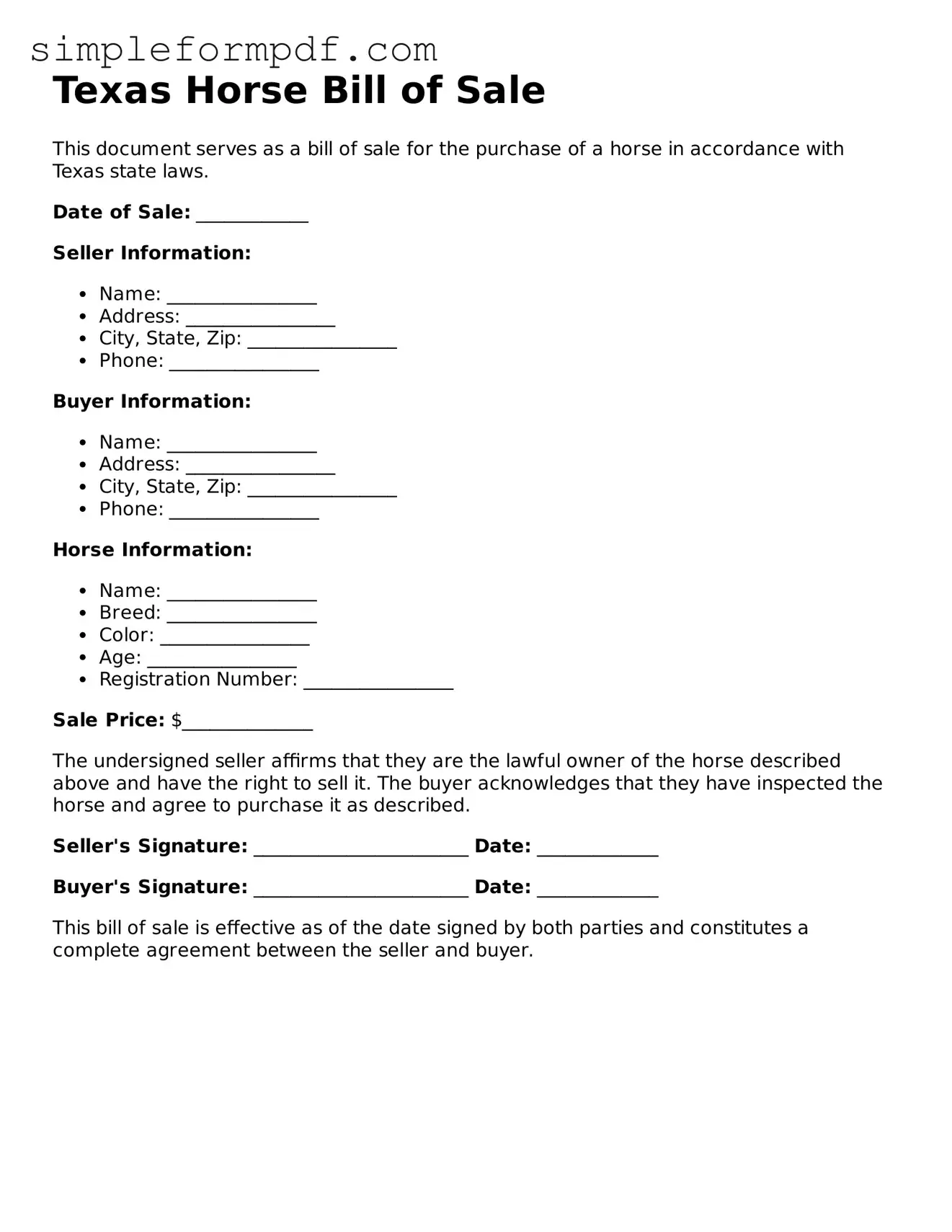Texas Horse Bill of Sale
This document serves as a bill of sale for the purchase of a horse in accordance with Texas state laws.
Date of Sale: ____________
Seller Information:
- Name: ________________
- Address: ________________
- City, State, Zip: ________________
- Phone: ________________
Buyer Information:
- Name: ________________
- Address: ________________
- City, State, Zip: ________________
- Phone: ________________
Horse Information:
- Name: ________________
- Breed: ________________
- Color: ________________
- Age: ________________
- Registration Number: ________________
Sale Price: $______________
The undersigned seller affirms that they are the lawful owner of the horse described above and have the right to sell it. The buyer acknowledges that they have inspected the horse and agree to purchase it as described.
Seller's Signature: _______________________ Date: _____________
Buyer's Signature: _______________________ Date: _____________
This bill of sale is effective as of the date signed by both parties and constitutes a complete agreement between the seller and buyer.
